Decarboxylation of Cannabis in a CO2 Extraction Process
Decarboxylation is an integral part of the extraction process, unless the end product will decarboxylate upon use (dabbing products, edibles, etc.) will “decarb” as they are heated. Decarbing is the only real chemical process in the whole extraction.
What is Decarboxylation?
The cannabinoids in a plant are acid form, so for the sake of this article, we will reference two common cannabinoids: THC (tetrahydrocannabinol) and CBD (cannabidiol). Prior to decarbing, these two are actually called THCa and CBDa – the “a” stands for acid. So the two compounds are THC-acid and CBD-acid – the cannabinoids have to be activated to become THC and CBD. The activation process is called decarboxylation and it is achieved by heating the product. The heating process also activates the psychotropic qualities of THC and gives the user the high associated with cannabis. If the oil is being used in an edible, the cooking process will activate the THCa/CBDa, converting it to THC/CBD.
When does Decarboxylation Happen?
The heat can be applied before the plant is extracted (put the ground up plant material into an oven) or after extraction and winterization, by heating the oil. The current thinking is that it is best to decarb after extraction and winterization but before distillation.


What is Winterization?
Winterization is the step after extraction that removes the unwanted materials in the extraction, like fats, waxes, and lipids. This process involves adding food-grade ethanol to the extract, mixing it thoroughly, then placing it in a deep freezer overnight. The mixture is then run through a filter, which captures the undesirable elements, leaving a waxy substance behind. This can be used in other products, like balm or lotion. Once the extract is free of the waxes and fats, the ethanol needs to be removed and this is done using a rotary evaporator, which warms the oil and gently removes the ethanol. The ethanol has a lower boiling point than the oil so as the mixture is warmed, the ethanol boils off and is collected in a condenser. Once this step is complete, the oil is pure, winterized oil, with no fats, waxes, lipids, or ethanol.
How to Decarboxylate
Once the oil is winterized, it is time to decarboxylate. To do this, you will need a decarb oven (we recommend Cascade Sciences ovens), and then follow these relatively simple steps:
-
- Preheat the oven to 260°F.
- Put the extracted, winterized oil into a dry, properly sanitized tray that has been lined with parchment paper and cover with aluminum foil.
- Once the oven has heated, place the dish inside the oven.
- Inspect the material every 10 minutes for at least one hour.
- Check that the bubbles are decreasing, and the material is changing color to a warm brown hue.
- The whole process should be done in two hours, but that does vary, depending on how much extract is being decarboxylated and also, the potency of the product.
There are different methods that involve additional equipment, but the steps above outline a very simple process that can be accomplished without expensive equipment. As the processing laboratory gets larger and the quantities warrant it, processors should consider expanding and getting laboratory equipment, like reactors. These can be very expensive, for example a small five-liter reactor sells for around $70,000. By contrast, a decarboxylation oven from Cascade costs around $5,000. Of course, you can also use a regular oven, but this is not recommended from cleanliness perspective.
How can you tell if your extract is activated?
Your extract is done when there are no more bubbles present. It is not done until the last bubble has popped!

